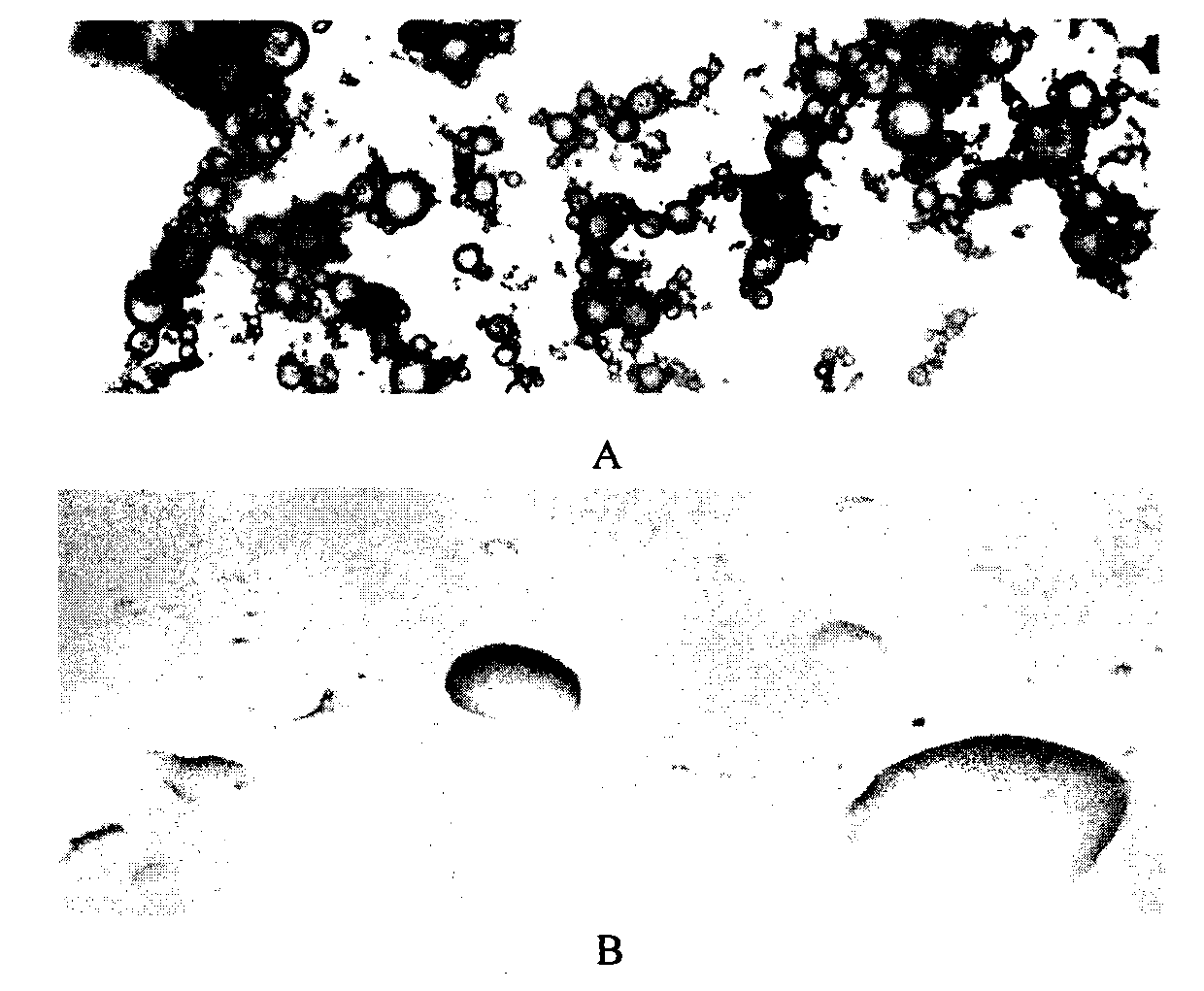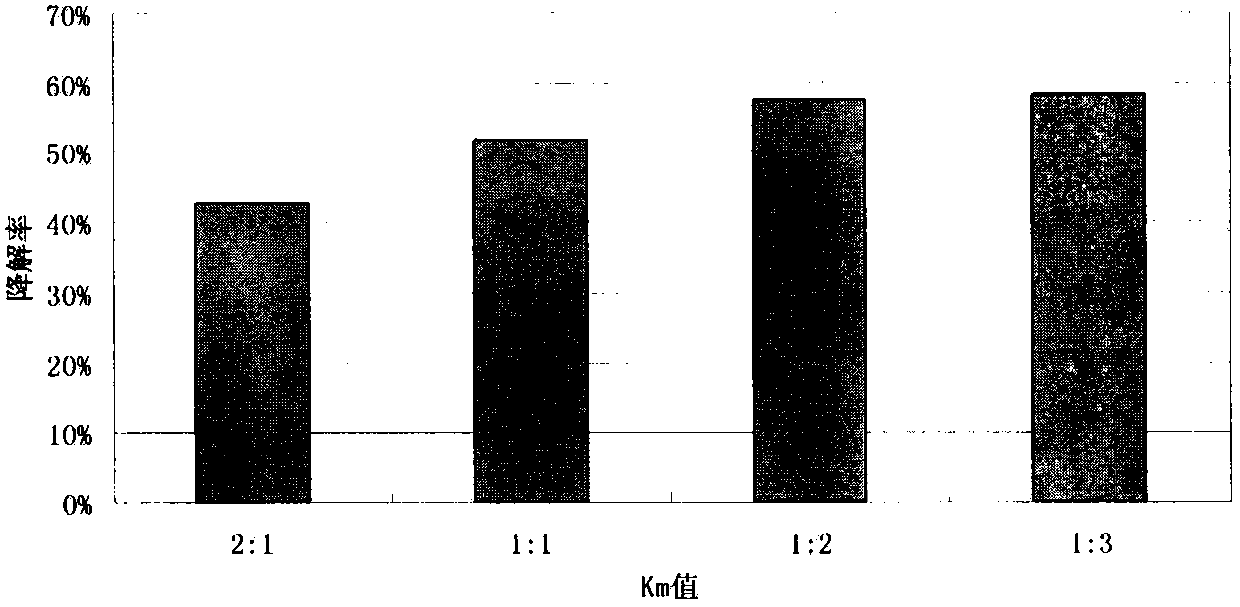Oleophylic fertilizer for bioremediation of oil polluted environment and method for preparing oleophylic fertilizer
A technology of bioremediation and oil pollution, which is applied in the field of environmental treatment of oil pollution, can solve problems such as inapplicable bioremediation, and achieve the effect of improving bioavailability, eliminating oil film, and promoting bioremediation
- Summary
- Abstract
- Description
- Claims
- Application Information
AI Technical Summary
Problems solved by technology
Method used
Image
Examples
Embodiment 1
[0032] Embodiment 1 takes urea as the preparation of the lipophilic fertilizer of nitrogen source
[0033] Prepare a mixture of soybean lecithin and co-emulsifier according to the mass ratio (Km value) of 1:2, heat at 75°C for 10 minutes, vortex and mix for 2 minutes, and after ultrasonic dissolution for 10 minutes, weigh oleic acid and the co-emulsifier according to the mass ratio of 3:7. 2 g of the mixture was vortexed for 15 min to mix well. Add 600 μl of saturated urea solution, vortex and mix for 10 minutes, and then let it stand for about 30 minutes to balance and form a water-in-oil microemulsion. Sealed and stored to get the product.
Embodiment 2
[0034] Example 2 Adding lipophilic fertilizers to oil-polluted seawater to observe the state of the oil with a microscope
[0035] Get 50ml seawater sample in the Erlenmeyer flask of 150ml, add 0.5ml diesel oil respectively, one bottle adds the lipophilic fertilizer 100 μ l prepared in embodiment 1, another bottle does not add, after shaking at 100rpm rotating speed simultaneously 12h, get sample in Observed under a microscope, under the magnification of 100 times, the state of diesel oil is as follows: figure 1 As shown, the oleophilic fertilizer makes the oil film form small oil droplets and aggregate, and at the same time attach to the oil.
Embodiment 3
[0036] The promotion of embodiment 3 lipophilic fertilizers to bacterial strain degradation diesel oil
[0037] Four strains of diesel-oil-degrading bacteria isolated from oil-polluted seawater were cultured overnight in LB medium, then the bacteria were collected and inoculated into 150ml Erlenmeyer flasks containing 50ml of seawater samples, and 0.5ml of diesel oil was added to each bottle. 100 μl of the lipophilic fertilizer prepared in Example 1 was not added to the other bottle. After culturing in a shaker at 30° C. and 180 rpm for 4 days, the degradation rate of diesel oil was measured. The degradation rate of diesel oil was only 8% without adding lipophilic fertilizer, but it reached 64% under the condition of adding lipophilic fertilizer.
PUM
 Login to View More
Login to View More Abstract
Description
Claims
Application Information
 Login to View More
Login to View More - R&D
- Intellectual Property
- Life Sciences
- Materials
- Tech Scout
- Unparalleled Data Quality
- Higher Quality Content
- 60% Fewer Hallucinations
Browse by: Latest US Patents, China's latest patents, Technical Efficacy Thesaurus, Application Domain, Technology Topic, Popular Technical Reports.
© 2025 PatSnap. All rights reserved.Legal|Privacy policy|Modern Slavery Act Transparency Statement|Sitemap|About US| Contact US: help@patsnap.com



